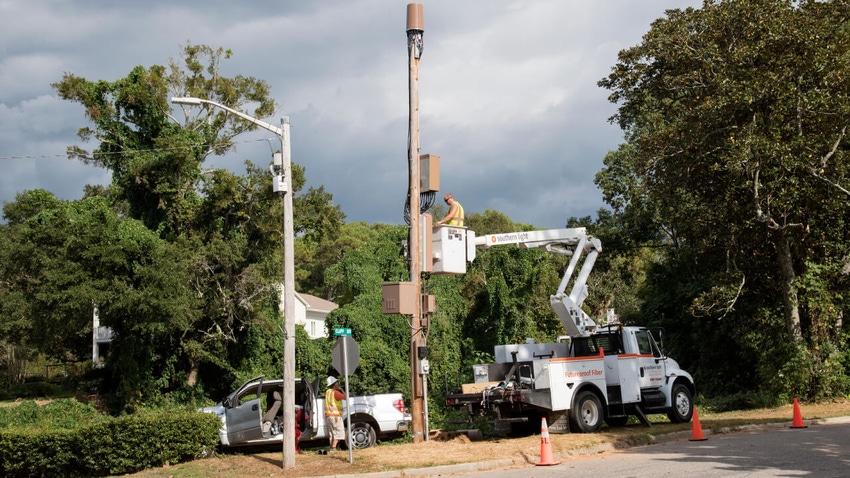Silver linings peek through leaden clouds for TDS, Verizon, others
'TDS Telecom ... conducted an assessment of its communications network across the country and located approximately 10 miles of lead-covered cables,' the company said.

There may be some indications that The Wall Street Journal's devastating exposé on lead-covered telecom cables is finally being digested by the wider market. And one company involved in the issue – TDS Telecom – said it counted just ten miles of lead-covered wires in its network.
"In response to recent media reporting, TDS Telecom ... conducted an assessment of its communications network across the country and located approximately 10 miles of lead-covered cables," the company said in a statement. "TDS Telecom is identifying next steps to address the very limited amount of lead cabling it estimates is in its network. TDS Telecom strives to follow all applicable local, state, and federal laws where it provides service."
According to some financial analysts, the company's statement will help alleviate investor fears over expensive lead cleanup costs.
"Clearly, 10 miles total of lead-sheathed cabling is a very small portion of TDS's entire wireline network with >600,000 homes passed, and we think the >8% drop in TDS shares Monday and 20% drop since the close on Friday 7/7 feels exaggerated," wrote the financial analysts at Raymond James in a note to investors Tuesday. "We think many sell-side and buy-side fears are greatly exaggerating the amount of lead-sheathed cabling in wireline networks, the cost to replace/remove that cabling, and the timeline on which this replacement would be required."
Other analysts offered similar assurances for other companies involved in the issue, including AT&T and Verizon.
"While certainly a headwind for AT&T/Verizon, we think the market concerns are overblown and would estimate only ~3-5% of in-place network has direct lead exposure," wrote the financial analysts at Wells Fargo in a Tuesday note to investors.
"The entire situation could be overdone," added the financial analysts at TD Cowen in their own note to investors Tuesday. "If the water lead pipe remedies are a proxy, which we'd argue was far more pressing, the lead-water issue is still ongoing from 1986 and will not be remedied until 2038 (a 50+ year fix), and a cost shared by the government."
Indeed, shares in Verizon and AT&T appeared to rebound slightly in early trading Tuesday after days of historic declines.
Moreover, the telecom industry's top trade association is preparing the industry's defense. "Many considerations go into determining whether legacy lead-sheathed telecom cables should be removed or should be left in place, including those regarding the safety of workers who must handle the cables, potential impacts on the environment, the age and composition of the cables, their geographic location, and customer needs as well as the needs of the business and infrastructure demands. The US telecommunications industry stands ready to engage constructively on this issue," USTelecom wrote in a statement distributed to the media. "We have not seen, nor have regulators identified, evidence that legacy lead-sheathed telecom cables are a leading cause of lead exposure or the cause of a public health issue."
The association also quoted a former official from the Environmental Protection Agency (EPA), Stan Meiburg, who said the issue needs more study. "We know what the largest sources of lead are in the environment, including historic leaded gasoline and lead paint, and lead water pipes," Meiburg said in a statement distributed by USTelecom. "It's important to not make assumptions about individual cases of lead exposure, but rely on the findings of scientists and doctors in individual cases."
At issue is a series of detailed, lengthy articles from the WSJ on aging telecommunications cables that may have hazardous amounts of lead. According to the publication, "telecom companies left behind more than 2,000 potentially dangerous lead-covered cables under water, in soil and overhead. Many more are likely to exist."
Broadly, the lead-covered cabling issue – and the cost to potentially clean up toxic deployments – exacerbated investor worries over the competitive future of the telecom industry. Despite the promise of massive government subsidies heading into the space, shares in wired and wireless Internet providers have suffered amid fears of rising competition and the prospect for sluggish growth.
Related posts:
— Mike Dano, Editorial Director, 5G & Mobile Strategies, Light Reading | @mikeddano
About the Author(s)
You May Also Like











